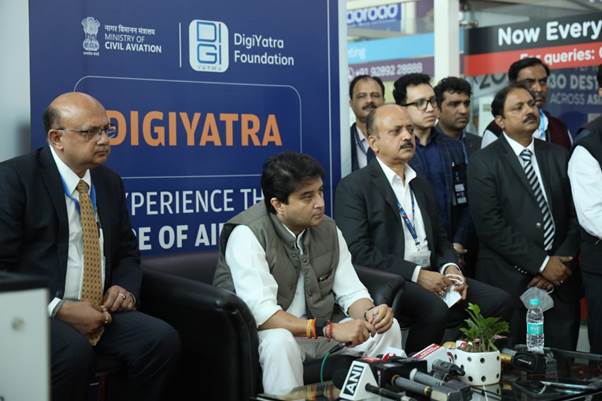Conversion of Proprietorship to Private Limited Company
A sole proprietorship cannot get all benefits of operation as it grows. So, there will be a need to convert the proprietorship into a private limited company. The conversion can bring in its wake all the benefits of a company like higher capital, limited liability, and so on. Conversion of a proprietorship into a private limited company provides many benefits, but it also brings along the diffusion of power and loss of independence. Small businesses formed as sole proprietorships generally struggle to upscale their venture due to minimal investment capacity, unlimited liability, no separation between ownership and management, no perpetual succession after the death of a sole person, etc. It also cannot induct new investors on the Board and is less preferred for investment. Start-ups and growing businesses started as sole proprietorships choose to convert into Private Limited Company because it allows outside funding to be raised easily, limits the liabilities of its shareholders, and enables them to offer employee stock options to attract top talent. A Pvt Ltd Company is a type of privately held small business entity, which is considered a separate legal entity in the eyes of law, provides separation between ownership and management, restricts shareholding up to 200 or fewer members, and shares are prohibited from being publicly traded. A sole proprietorship can be converted into a Private Limited by executing a sale/takeover agreement and mentioning the takeover of the business of a sole proprietor as the main object in its Memorandum of Association (MOA). Choosing to Convert to a Private Limited Company as the Business Grows: 1. Limited Liability & Member: As the business expands, the proprietor may seek the protection of limited liability provided by a Private Limited Company, shields personal assets from business liabilities.Requires a minimum of two members, up to a maximum of 200. 2. Attracting Investors: Private Limited Companies have greater potential to attract external investors by issuing shares, facilitating fundraising for expansion and development. 3. Enhanced Credibility: A Private Limited Company often carries greater credibility in the business world, fostering trust among clients, partners, and investors. 4. Scalability: The structure of a Private Limited Company is conducive to scaling operations and accommodating a larger workforce, facilitating business growth. 5. Transferability of Shares: Private Limited Companies offer flexibility in transferring ownership through the sale or transfer of shares, enabling changes in ownership structure. 6. Tax Planning Opportunities: Private Limited Companies may benefit from various tax planning strategies and potentially lower tax rates on profits, offering tax advantages as the business grows.Profits are taxed at a fixed rate of 30%, plus surcharges and cess. 7. Formalized Governance or Compliance: Private Limited Companies generally have more formal governance structures, which can enhance transparency and corporate governance practices.Annual returns and accounts must be filed with the Registrar of Companies. Conditions for Conversion of Proprietorship Firm into Pvt Ltd Company All the assets and liabilities of the sole proprietorship must be transferred to the company. The shareholding of the sole proprietor should be at least 50% of the total share. The shareholding of the sole proprietor must be continued for a period of 5 years. Any additional benefits or consideration shall not be provided to the sole proprietor except the allotment of shares. The Memorandum of Association (MOA) of the company shall have one of its objects as “The takeover of a sole proprietorship”. A sale or takeover agreement has to be executed between the sole proprietorship firm and the company. Advantages of Converting Proprietorship to Pvt Ltd Company Separate legal entity and Limited Liability A company is a separate artificial person in the eyes of the law, and the liability of each member/shareholder is limited up to the unpaid amount of shares. It means that if a company faces loss under any circumstances, then its shareholders are not liable to sell their own assets for re-payment. Perpetual succession (Continuous Existence) A company has a continuous existence in the eyes of the law even in the case of death, insolvency, and bankruptcy of its members. This leads to the perpetual succession of the company. The life of the company does not depend upon one person as in the case of a sole proprietor. Easy allocation of ownership and management Businesses that require funding from fund houses, venture capitalists (VCs), angel investors, etc. need to register or convert to Private Limited Company so that it can make them shareholders and offer them a seat on the board of directors, whereas Sole Proprietorship Firm is not eligible to share or fully give up ownership and management. Preferred by banks, VCs & investors As the private limited company’s books are audited by an independent auditor every year, most of the Banks, VCs, and investors prefer them over other forms of business. Separation between Ownership and Management In a Pvt Ltd company, there is a clear separation between ownership and management which ensures that management of the company is headed by a team of professionals with the diverse skills necessary to effectively run the company. Documents Required PAN Card copy of all directors (Identity Proof). Copy of Aadhar card/ Voters ID (Address Proof). Passport size photographs of Directors. Proof of ownership of business place (if owned). Rental agreement if rented. No Objection Certificate (NOC) of Landlord. Electricity or water bill. The forms to be submitted to the MCA are: Form 1 must be filed with the MOA, AOA and other documents. Form 18 specifies the details of the registered office. Form 32 contains particulars of the information of the directors. Procedure for Conversion of Proprietorship to Company The proprietor must complete the slump sale formalities. The Director Identification Number (DIN) and the Digital signature certificate (DSC) must be obtained for all the directors. The proprietor must apply for the availability of name in Form – 1. Prepare the MOA and Articles of Association (AOA) of the company specifying the objects and the rules of the company. Apply for the incorporation of the company to the Ministry of Corporate Affairs (MCA). Submit all the relevant documents. Receive the Certificate of Incorporation. Apply for a new
Conversion of Proprietorship to Private Limited Company Read More »






